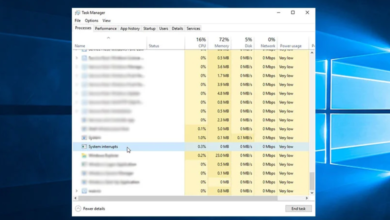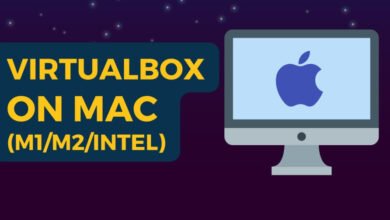7 Easy WordPress Frameworks for Custom Site Building

A WordPress framework is, quite literally, what makes up the foundation of your favorite themes, and businesses and developers will often prefer to buy a framework over a complete theme because of the flexibility it gives them with customization. If you like having a general setup and functionalities in place but would rather fine-tune the additional details yourself, a framework with the features you like will be the best option for you. Here are some of the top WordPress frameworks currently on the market:
Best WordPress Frameworks
1. Genesis
Genesis by StudioPress is one of the most versatile and widely-used frameworks available through WordPress, and actually made several of the most popular themes on the famous content management system. This particular framework has placed most of its value on three things in particular:
- Security and support – Genesis regularly updates to make certain that any vulnerabilities are addressed, and their support team is dedicated solely to keeping the framework operational, efficient, and bug-free. Not to mention, any customizations you make are applied to “child themes,” which are saved separately from the main framework, so updates will not affect any work you’ve already done.
- Responsive design – Genesis uses the most up-to-date HTML5 standards to create a responsive design for its users. While it doesn’t have the drag-and-drop feature or handy clickable boxes for features you want to include, there are numerous tutorials and support materials both through the Internet and through StudioPress itself, so you never have to be at a loss for how to complete an action.
- Endless possibilities – You’ll find a remarkable selection of customization options for headers, footers, and widgets. Whether you want to add a slider to your homepage, have a carousel image gallery, or make your webpages interactive instead of static, there’s a way to accomplish all of this and more through Genesis. Additionally, if you don’t want to go through the hassle of coding and creating your own theme, Genesis offers dozens of child themes already made.
If you’d like to learn more about this theme, have a look at this comprehensive post by the genesis themes experts at CollectiveRay.
2. Cherry Framework
Cherry Framework is a collaboration between WordPress and TemplateMonster that offers anything from full-service development to site optimization to PSD translations. This framework is fond of shortcodes, which simplifies the customization process quite a bit. The shortcodes are saved to a plugin that is automatically installed with the framework itself, meaning updates and framework changes won’t disrupt their usability or functionality on the final product.
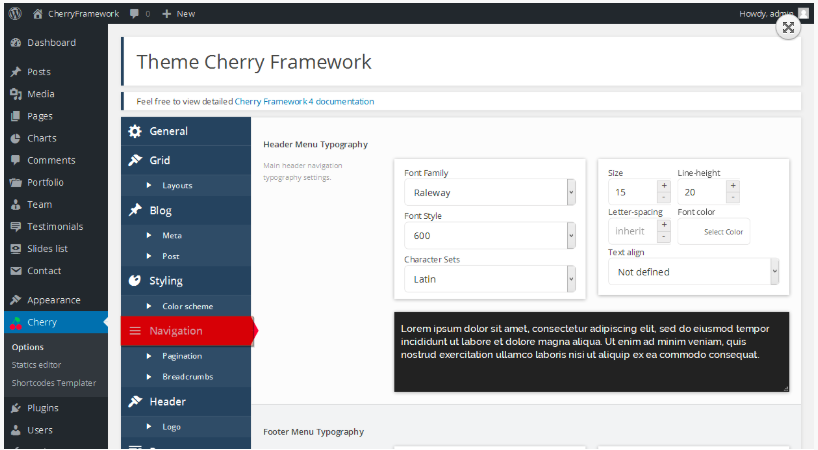
This framework also offers a wide range of themes for purchase, which includes a “buyout” option. If you’re wanting your site to be completely unique, and you’d like to have license to use a theme on multiple domains, buying out the theme is a great option. It can be on the pricier side, but it’s worth the peace of mind knowing that no one else would be able to copy your layout.
3. Thesis
Many frameworks will start you off with a basis code to build onto, which requires rewriting/overwriting CSS and HTML when you want to change something about the foundation of the theme. Thesis addresses this issue by giving you the ability to build from scratch by giving you a drag-and-drop skin editor. You can easily drag what widgets you like, add and change headings, and completely customize your theme from this skin editor for a user-friendly development experience.
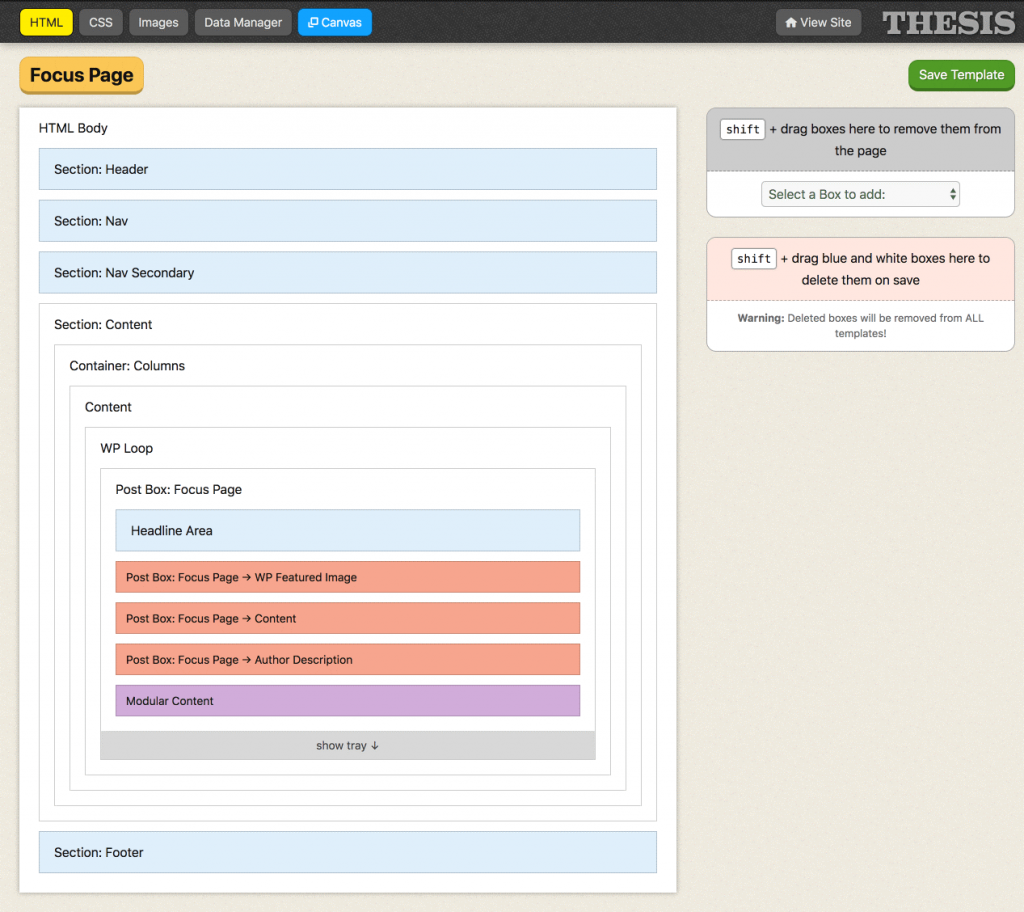
One of Thesis’s biggest advantages over other frameworks, though, is that it was created with SEO in mind. Instead of having to install plugins for title and meta tagging (or even just excluding the option altogether), Thesis automatically gives you Schema and Google+ Author support to optimize your searchable content. This was a brilliant move on the part of the creator, because it reduces the hassle for the developer and addresses one of the most crucial parts of content/site creation in modern web culture.
4. Headway
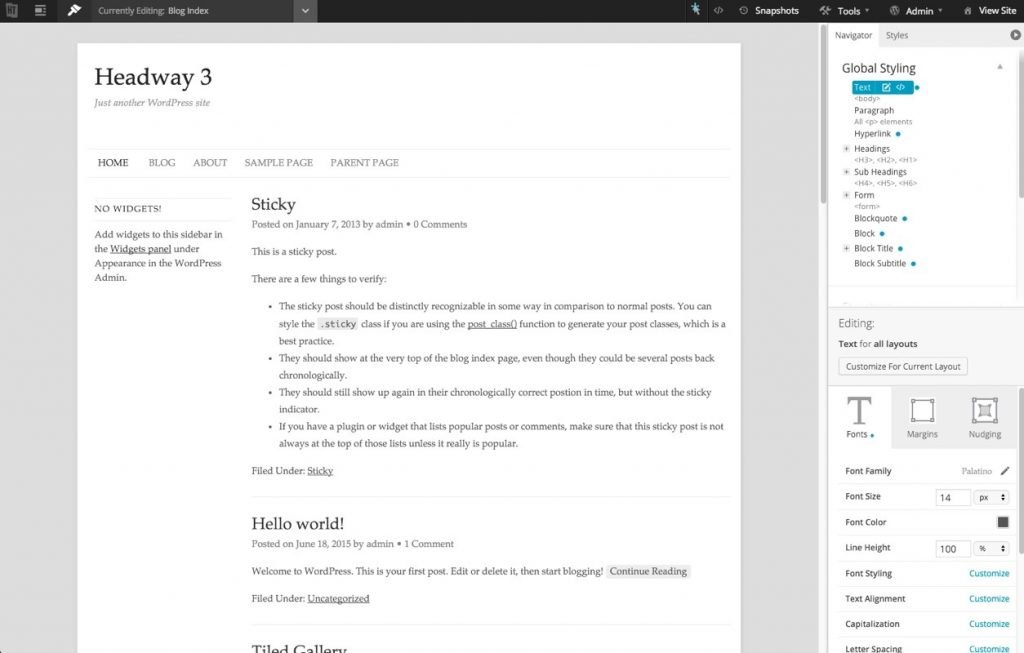
Headway is another drag-and-drop WordPress framework that makes customization simple. One of its most helpful features is the native rollback system. Essentially, the framework will periodically take snapshots of your work in progress and give you the ability to “roll back” to one of those snapshots. Think of it like a save point in a videogame that lets you use multiple save slots. This feature leaves room for mistakes and changed minds without the irritation of having to hit Ctrl+Z a hundred times or going through and cutting, copying, and pasting any time you decide it was better before you edited it.
This framework also currently offers a 30-day money back guarantee! This is a rare offer for frameworks, and speaks highly toward their confidence in your satisfaction. This WordPress framework’s responsive design and helpful tools are perfect for anyone from beginners to expert developers.
5. Gantry
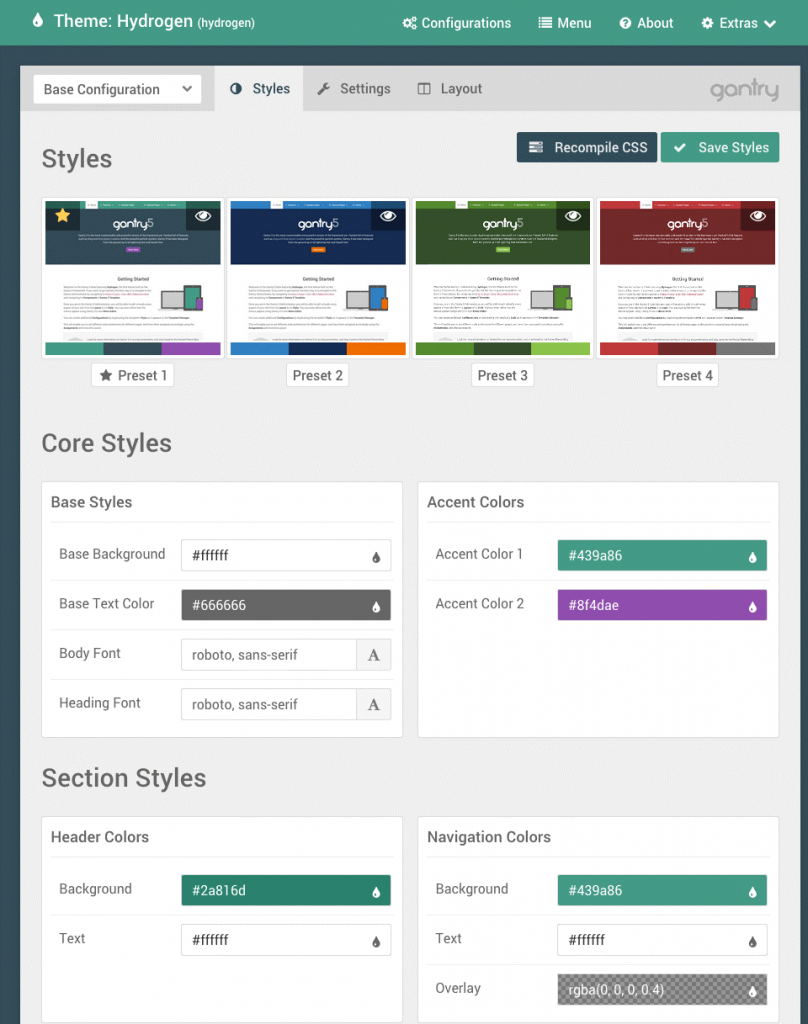
While Gantry is primarily known as a WordPress framework, it can also be used for theme development with Grav and Joomla. This particular framework is ideal for beginners. It’s lightweight and fast, also uses drag-and-drop visual editing, and has a vast support system for its users just in case there’s anything someone doesn’t find intuitive. Gantry is incredibly flexible and focuses on making sure users are not limited in their ability to edit their own work. It has unlimited undo and redo options to ensure that beginners and experts alike don’t have difficulty getting back to a previous point in their work.
6. DIVI
Divi is a popular page builder where you individually format each post with its intuitive design. As a WYSIWYG (what you see is what you get) framework, this is also a great theme builder for beginners, allowing you to see the full product as you work. The most important thing to keep in mind about this framework, though, is that it uses shortcodes for nearly everything. Unlike other options, Divi doesn’t save your work to a child theme or plugin, so if you try to transfer your work to a different framework, you’ll essentially wind up with a sea of shortcodes to sift through and fix, which is a lot of extra work you don’t want to have to deal with.
However, sticking with one framework is actually preferable. Options can be nice, but you don’t want to change the digital face of your company, business, or blog any more than is absolutely necessary. Users get attached to the way their favorite sites look, so beyond a few regular updates and however many additions are necessary, it’s best not to change platforms completely.
7. Themify
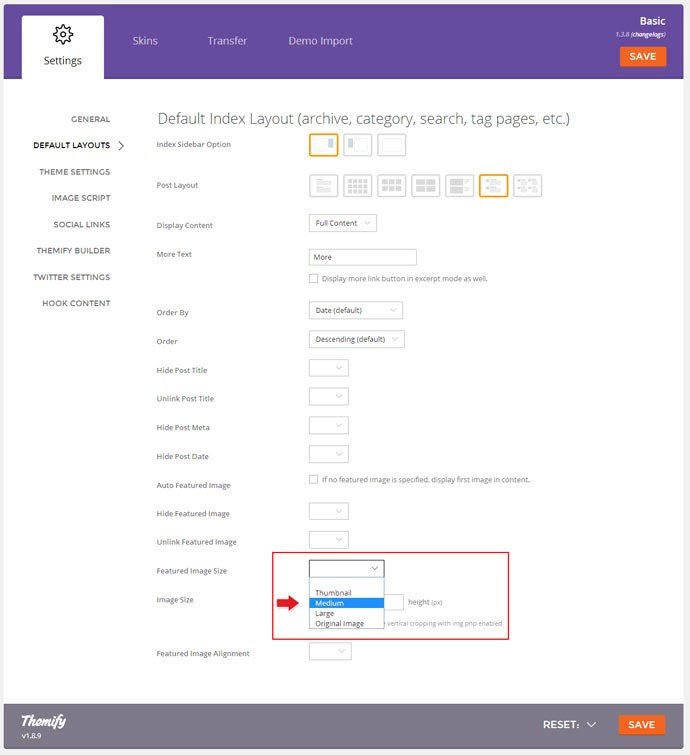
Themify is another WordPress framework known for drag-and-drop features, but its biggest calling card is the number of ready-made themes and plugins that come along with it. This framework is also extremely user-friendly even to those with absolutely no coding experience, but it doesn’t sacrifice the flexibility or customization options those with more experience would expect. Themify also gives you the option to purchase several levels of membership, including yearly and lifetime purchase options depending on whether you want access to all themes, Photoshop files, and/or plugins. The lifetime option is $399 and gives you access to literally everything the framework has to offer.
Wrapping Up
Now that you’ve seen a good selection of WordPress frameworks, it’s time to get your hands dirty. We would recommend trying out a few of them and then choosing which one you think fits your needs best and get cracking! Good luck!


